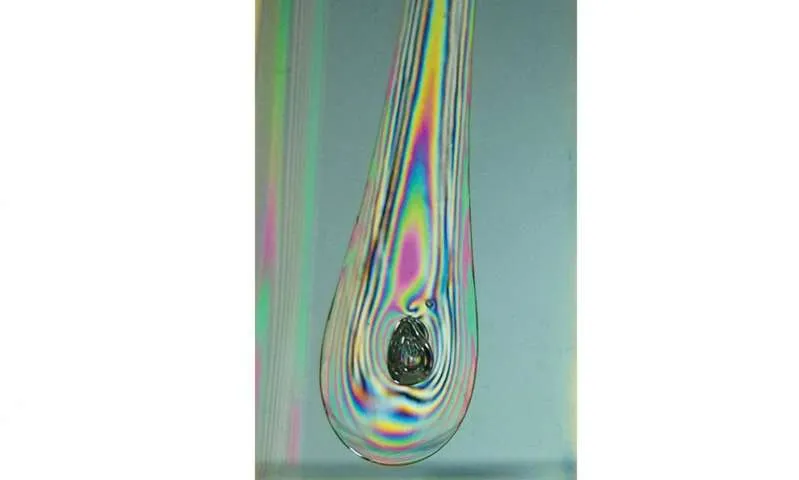The 400-Year-Old Mystery of These Bullet-Shattering Glass Drops May Finally Be Solved
The tadpole-shaped glass structures can survive a hammer blow but explode if their tail is squeezed
Since the 17th century, Prince Rupert’s drops have puzzled scientists. The drops are made by dipping a bead of molten soda-lime or flint glass in cold water, which forms a tadpole-shaped piece of glass. While the head of the drop is incredibly strong and can resist everything from a hammer blow to speeding bullets, just flicking the tail of the crystal can cause the whole thing to burst into powder. Now, as David Szondy at New Atlas reports, researchers have finally figured out the secrets behind these drops.
Back in 1994, researchers used high-speed photography to record and analyze the way the drops shatter, Lisa Zyga reports for Phys.org. They concluded that the surface of the drop has high compressive stress while the interior of the drops is under high tension. While that combo makes the head very strong, it’s not in equilibrium, which means even a slight disruption at the tail causes the whole thing to destabilize and fall apart. In fact, the cracks move at 4,000 miles per hour, which pulverizes the glass.
But it wasn’t until recent technological advances that researchers could examine the stress distribution in detail. They used a type of microscope known as a transmission polariscope to study the tensions within the glass. By sending red LED light through the drop while it was submerged in a clear liquid, they could measure how stresses in the drop slowed down the light. The overall effect is a rainbow-colored optical map of the forces within the drop. Using mathematical models, researchers then calculated the various interior and exterior forces. They detailed their results last year in the journal Applied Physics Letters.

The compressive stress around the head of the drop was calculated to be between 29 to 50 tons per square inch, making the glass as strong as some types of steel. But that strength only exists in a thin layer that is just ten percent the diameter of the head.
To break a drop, a crack needs to get through that layer and reach the interior tension zone. But the outer layer is so strong that most cracks just form a spider web along the surface. The tail, however, is another story. This thin wisp of glass can easily be broken, providing a direct link to that sensitive interior tension zone. So when it breaks, the rest of the glass shatters.
The formation of the zones of strength and weakness has to do with how the drops form. "The surface of the drops cools faster than the interior, producing a combination of compressive stresses on the surface, and compensating tensile—or pulling—stresses in the interior of the drops," according to the press release.
“The tensile stress is what usually causes materials to fracture, analogous to tearing a sheet of paper in half,” Koushik Viswanathan of Purdue University, an author of the paper, says in the press release. “But if you could change the tensile stress to a compressive stress, then it becomes difficult for cracks to grow, and this is what happens in the head portion of the Prince Rupert’s drops.”
Researchers have puzzled over these drops for some 400 years. They were named after Prince Rupert of Germany who gave five of the strange drops to England's Charles II. Since then, scientists have tried to work out what makes the drops so strong. People have tried everything to break these crazy glass tadpoles from shooting the drops to squashing them in hydraulic presses. But these experiments are notable for more than just the fun of trying to destroy the structures (though it is pretty fun to watch).
As Andrew Liszewski at Gizmodo reports, learning about the drops could lead to new types of shatterproof glass and, most importantly, un-crackable cell phone screens.

